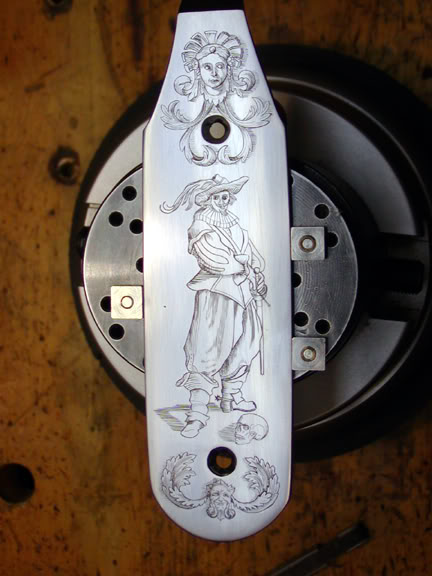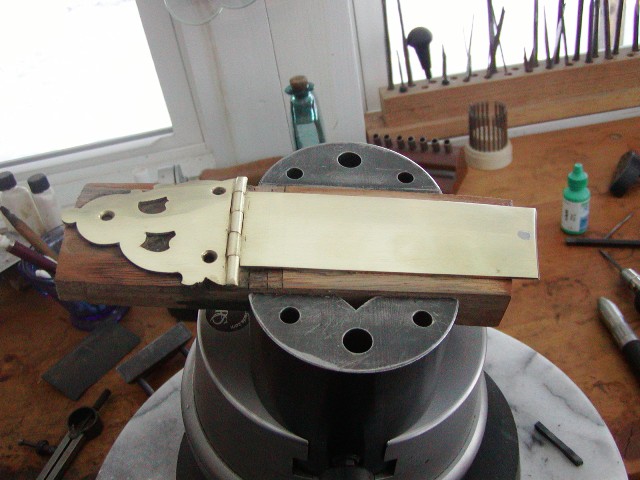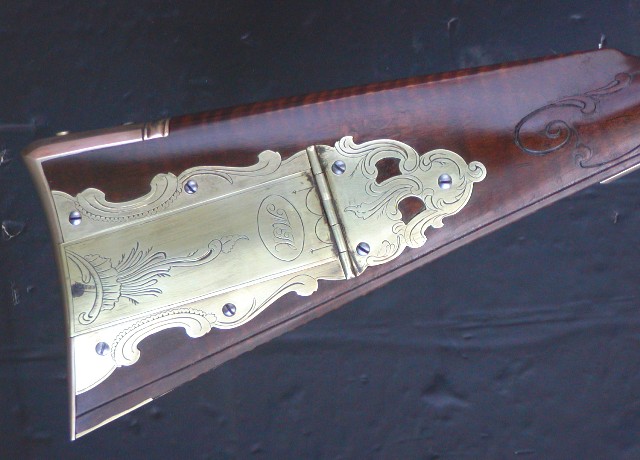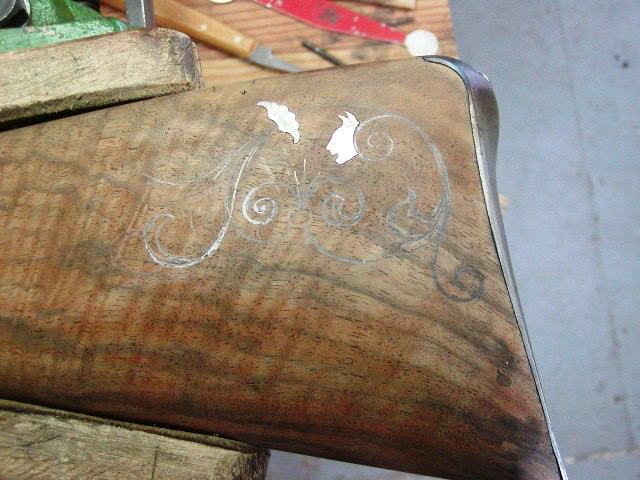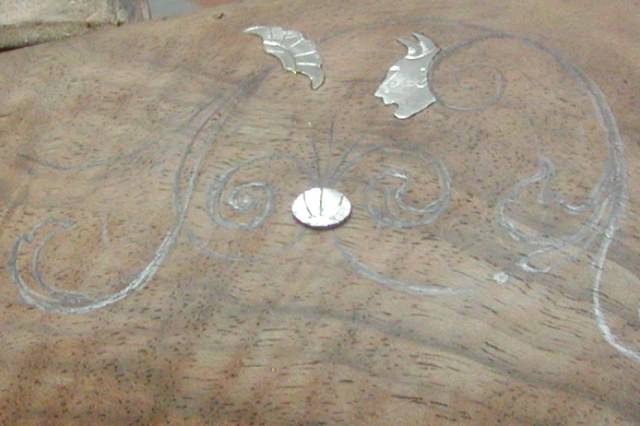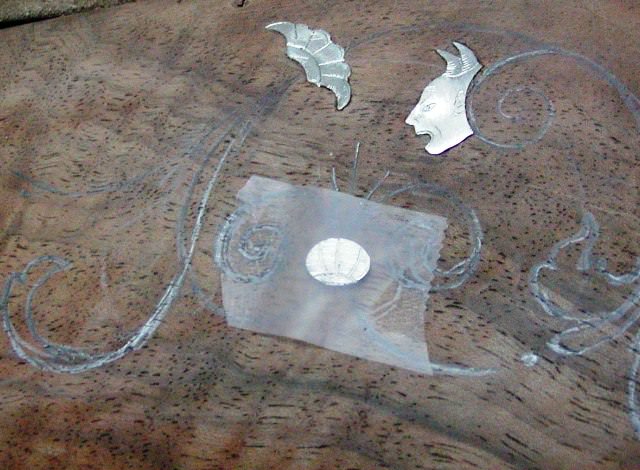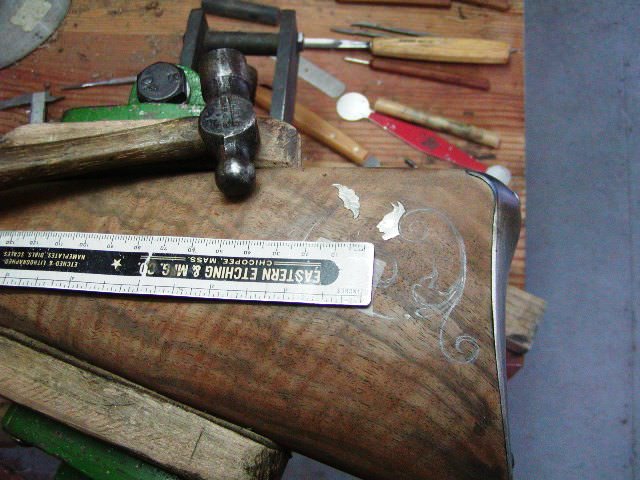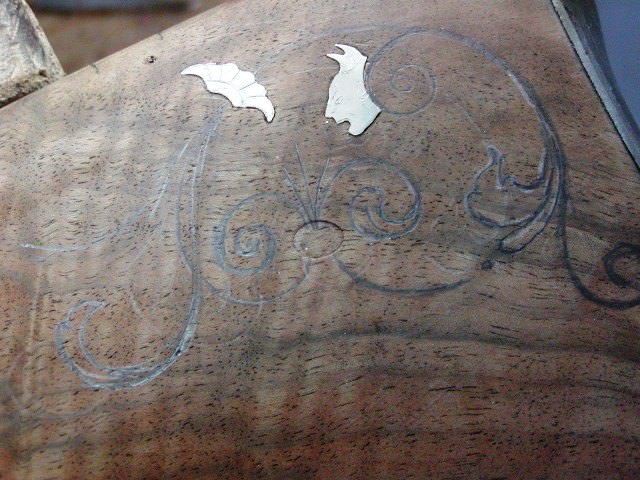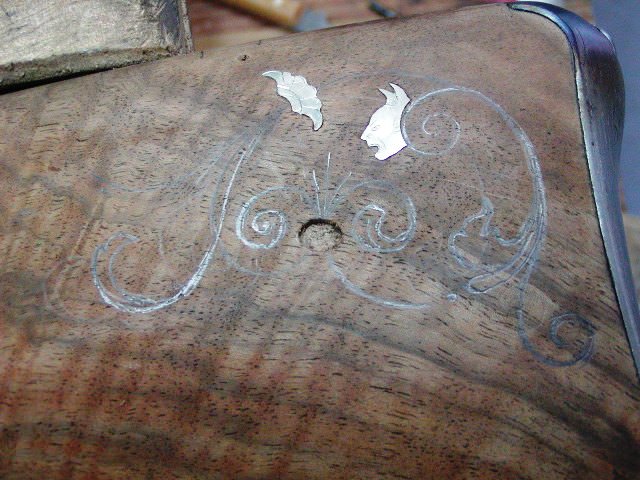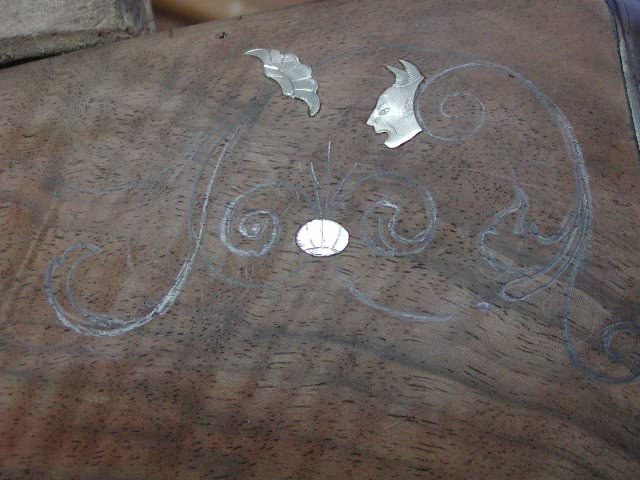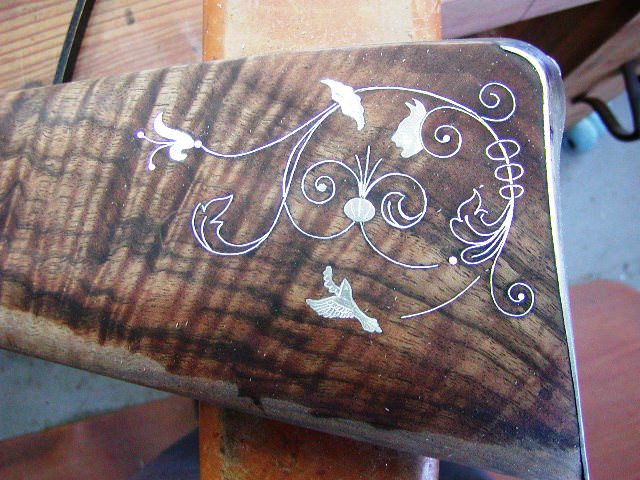Hi Larry,
I agree 100% with Jerry's comments. I think the decision to remove an inlay or leave it in place during finishing is mostly about how large the inlay is and the extent of engraving. It is a huge advantage to be able to spin a metal part in a rotating vise to do smooth engraving. With the exception of side plates on some long rifles, I rarely use metal inlays without engraving. Therefore, my decision to permanently attach them before finish is based on how practical it is to remove them and reinstall after finishing. Small intricate inlays can be a problem to remove so I often leave them in place accepting the fact that engraving them in place will be more troublesome compared to removing them for engraving. In the photo below is a gun with intricate inlays of metal and bone. Many are small and difficult to remove once in place so they were engraved on the gun. The mother-of-pearl and bone inlays were particularly delicate and brittle so they stayed in place.
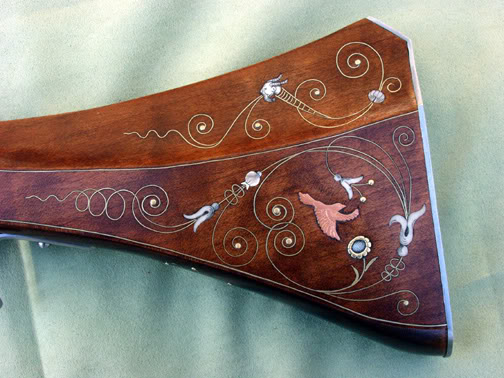
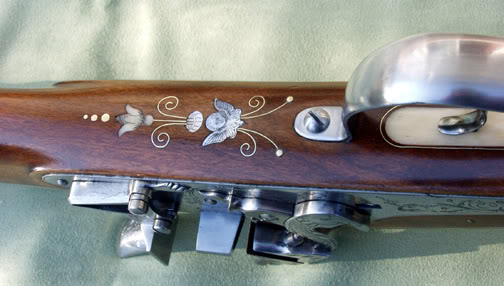
However, the butt plate, easily removed, was engraved in my ball vise.
There is usually no reason an inlay like a patch box cannot be removed for engraving and attached after finishing.
By the way, let me share a little trick I learned from Dave Price about inletting small metal inlays. They can be hard to hold in place and trace around on the wood. Instead, I tape them in place, then hold a flexible metal ruler on top and smack it with a hammer. That marks the outline on the wood making cutting the tiny mortice pretty easy.
Note Larry, that I engraved the inlays out of the wood. I engraved them first and then inlet them. Then they were permanently attached before finish was applied. One feature in doing it this way was the inlays sit a tiny bit proud of the wood surface. That is intentional and allows me to polish them periodically without rubbing off finish on the surrounding wood. It also prevented finish from building up on top of the inlays.
dave











